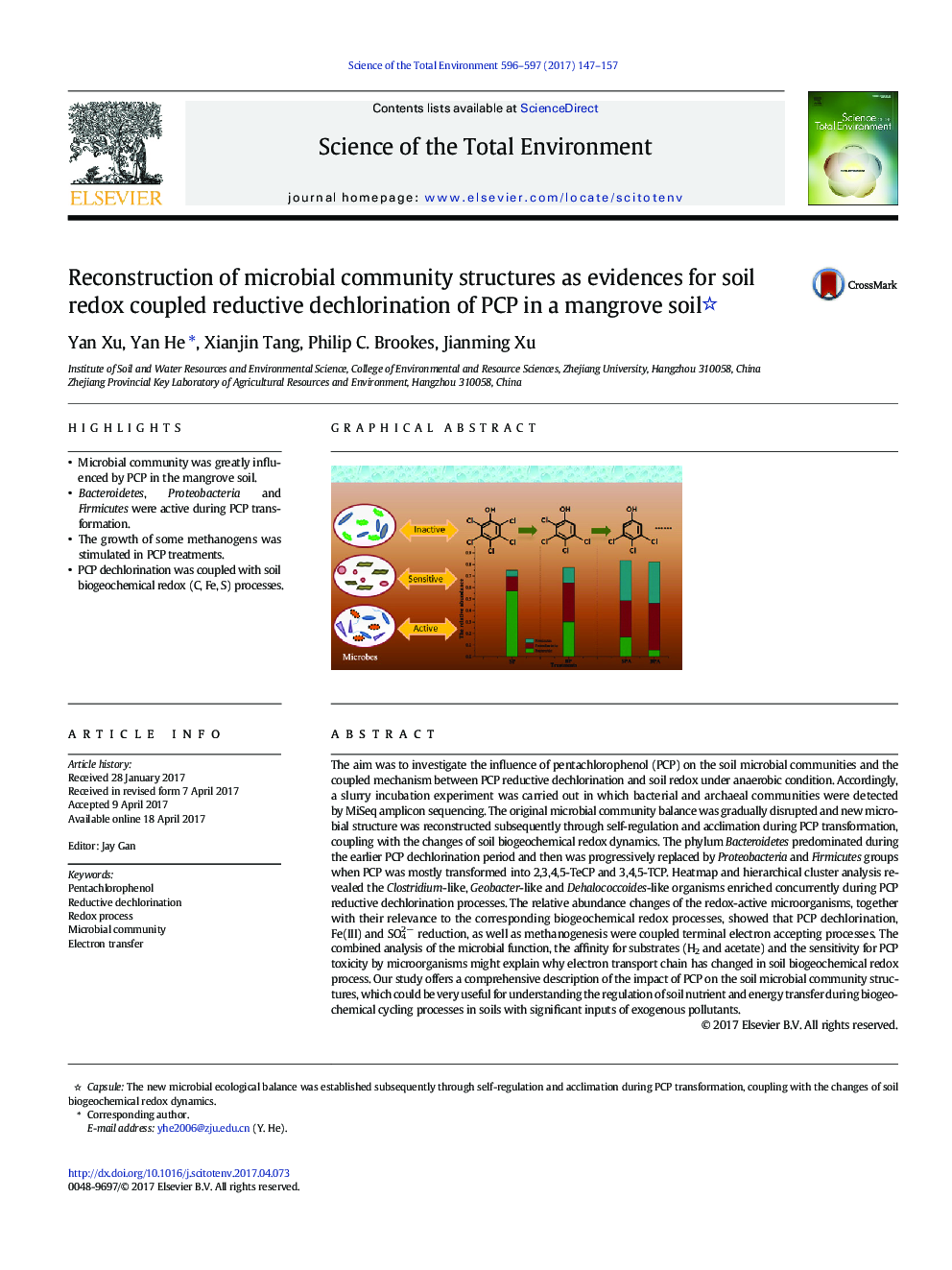| کد مقاله | کد نشریه | سال انتشار | مقاله انگلیسی | نسخه تمام متن |
|---|---|---|---|---|
| 5750684 | 1619700 | 2017 | 11 صفحه PDF | دانلود رایگان |

- Microbial community was greatly influenced by PCP in the mangrove soil.
- Bacteroidetes, Proteobacteria and Firmicutes were active during PCP transformation.
- The growth of some methanogens was stimulated in PCP treatments.
- PCP dechlorination was coupled with soil biogeochemical redox (C, Fe, S) processes.
The aim was to investigate the influence of pentachlorophenol (PCP) on the soil microbial communities and the coupled mechanism between PCP reductive dechlorination and soil redox under anaerobic condition. Accordingly, a slurry incubation experiment was carried out in which bacterial and archaeal communities were detected by MiSeq amplicon sequencing. The original microbial community balance was gradually disrupted and new microbial structure was reconstructed subsequently through self-regulation and acclimation during PCP transformation, coupling with the changes of soil biogeochemical redox dynamics. The phylum Bacteroidetes predominated during the earlier PCP dechlorination period and then was progressively replaced by Proteobacteria and Firmicutes groups when PCP was mostly transformed into 2,3,4,5-TeCP and 3,4,5-TCP. Heatmap and hierarchical cluster analysis revealed the Clostridium-like, Geobacter-like and Dehalococcoides-like organisms enriched concurrently during PCP reductive dechlorination processes. The relative abundance changes of the redox-active microorganisms, together with their relevance to the corresponding biogeochemical redox processes, showed that PCP dechlorination, Fe(III) and SO42Â â reduction, as well as methanogenesis were coupled terminal electron accepting processes. The combined analysis of the microbial function, the affinity for substrates (H2 and acetate) and the sensitivity for PCP toxicity by microorganisms might explain why electron transport chain has changed in soil biogeochemical redox process. Our study offers a comprehensive description of the impact of PCP on the soil microbial community structures, which could be very useful for understanding the regulation of soil nutrient and energy transfer during biogeochemical cycling processes in soils with significant inputs of exogenous pollutants.
99
Journal: Science of The Total Environment - Volumes 596â597, 15 October 2017, Pages 147-157